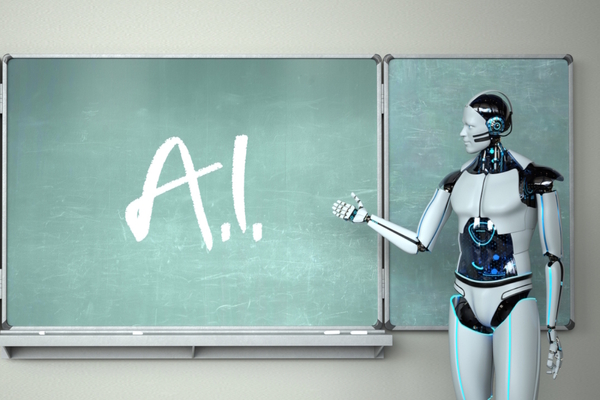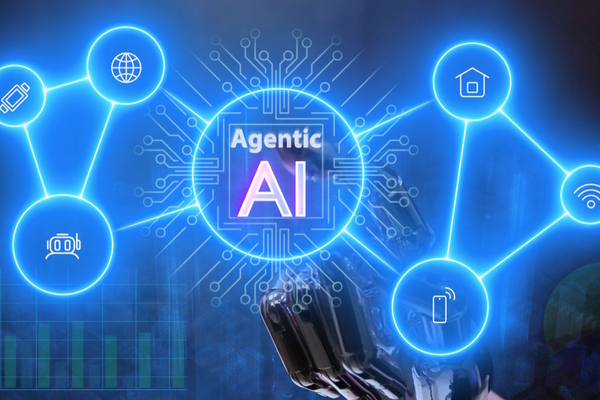Revolution or evolution: benefits of incremental innovation

Jamie Dobson at Container Solutions outlines how different forms of step-wise innovation have benefited businesses while reducing risk
If you shop at German-owned supermarket chains Aldi and Lidl, you’ll know that they do things a little differently from their competitors. But one Aldi store in London has been pushing things even further than own-brand dominance and middle aisle limited-time offers. The Greenwich Aldi has been trialling till-free shopping. Customers use a mobile app to enter, select items, and leave without scanning anything at a till. Cameras and sensors track item selections, billing via the app occurs automatically, and receipts are sent electronically.
If this sounds familiar, it is. Amazon have been using the same concept for their “Just Walk Out” stores for a while. But what is interesting is Aldi’s approach to innovation.
Rather than attempting to revolutionise their entire operation overnight, they’ve chosen a single test location to understand how customers behave, what technical challenges arise, and whether the economics actually work.
If successful, they can roll out the technology gradually. If not, they’ve limited their exposure whilst gaining invaluable insights. In other words, they are looking to change incrementally, not all in one go; they aren’t revolutionising their entire operation, they are taking it step by step.
While it is the "disruptive breakthroughs" that dominate business media, some of the most successful transformations in business history have come through limited, incremental steps.
There are three levels of incremental change:
- no-regret moves
- experimental approaches
- capacity building
The right level for your business will depend on future market uncertainty and the level of risk your organisation can tolerate. No-regret moves seek to minimise risk while dealing with high uncertainty. At the other end, capacity building can be riskier yet can help capitalise on a more certain marketplace. Businesses with the capacity and resources can also try to balance their incremental innovation across each of the three levels.
No-regret moves
In the late 1970s, Intel faced fierce competition from Motorola, whose microprocessor was technically superior. Rather than focusing solely on product improvements, Intel launched Operation CRUSH – a comprehensive customer service initiative.
The brilliance of CRUSH lay in its universal value. Regardless of whether superior service could overcome Motorola’s technical advantages, better customer relationships would always benefit Intel’s business.
What happened, in fact, was that Intel’s superior customer service helped them win the contract with IBM to supply microprocessors for the computer giant’s first personal computer, fundamentally altering the trajectory of personal computing.
Key insight: start with improvements that provide value regardless of how the future unfolds.
Modern businesses face similar opportunities with artificial intelligence. AI has advanced enough to help developers write code more efficiently, automate routine customer service inquiries, and streamline report generation.
Using AI with human supervision represents a no-regret move. It provides immediate value whilst building familiarity with AI capabilities that will prove crucial as the technology evolves. Whether AI transforms entire industries or simply improves existing processes, these foundational investments will pay dividends.
Experimental approaches
In 1879, Thomas Edison faced a seemingly impossible challenge at his Menlo Park laboratory. He needed to perfect the incandescent light bulb whilst simultaneously designing an entire electrical distribution system.
Rather than attempting to solve everything at once, Edison pioneered what computer programmers call "evolutionary prototyping" – testing improvements in increasingly complex environments. Each test provided valuable learning, regardless of whether it succeeded or failed, while limiting risk of everything going wrong.
Key insight: when facing uncertainty, design experiments that provide learning while minimising risk.
Aldi’s AI store follows this exact approach. They’ve developed an experiment, limited to a few locations, which will provide information regardless of the outcome.
If successful, they can roll the technology out gradually. If not, they’ve limited their exposure whilst gaining invaluable insights about customer behaviour, technical challenges, and operational economics.
Even if the specific technology doesn’t scale, the learning will inform future innovations.
Capability building
In 1970, Xerox executives recognised that the office of the future would be digital. Rather than waiting for that future to arrive, they established the Palo Alto Research Centre (PARC) and gave it a simple mandate: invent the technologies that would define tomorrow’s workplace.
PARC’s researchers had remarkable freedom to pursue long-term projects without immediate commercial pressure. Over the next decade, they invented the personal computer, Ethernet, laser printing and the graphical user interface.
Key insight: invest in capabilities that may not immediately pay off but position you to innovate in more certain markets.
While Xerox failed to commercialise PARC’s inventions, the idea of building capacity for future innovations can still help companies invent the future.
Amazon’s path to cloud computing offers an interesting example. Facing an IT infrastructure bottleneck that was hampering innovation, they initially built tools to help their own developers provision servers more easily.
It was only when Jeff Bezos and Colin Bryar heard Flickr’s founder describe similar infrastructure challenges while attending a conference that they realised their internal solution addressed a universal problem.
Amazon then scaled up their computing power, databases, and more sophisticated capabilities gradually to launch Amazon Web Services (AWS), which now runs a significant part of the internet.
A practical framework for modern businesses
The most successful companies operate across all three levels simultaneously, balancing immediate improvements, experimental learning, and long-term capability building.
- Start by identifying no-regret moves within your current operations. What technologies or processes would provide value regardless of how your industry evolves? For most businesses today, this includes basic automation, data analytics, and digital customer interfaces.
- Design experiments that test specific hypotheses about future scenarios. Follow Aldi’s approach: choose limited scope, define success metrics clearly, and commit to learning rather than immediate profits.
- Create space for shelving and revisiting ideas – you need places where promising innovations go when immediate applications aren’t obvious. The transistor was invented in 1947 but didn’t find widespread application until the 1960s, for example.
Many AI capabilities exist today without clear business cases, but patient companies may find valuable applications as the technology matures.
Build systems for getting innovations into users’ hands early. Open APIs, pilot programmes, and collaboration platforms allow external creativity to enhance your innovations. The most successful technology companies understand that users often discover applications that creators never imagined.
Finally, recognise that breakthrough innovation requires psychological safety – teams must feel comfortable experimenting, failing, and learning without punishment. This cultural foundation proves more valuable than any specific technology investment.
As artificial intelligence reshapes business landscapes and global uncertainties multiply, the temptation to seek silver bullet solutions grows stronger. But Aldi’s methodical approach to store automation and the patient journeys of companies like Amazon and Intel suggest a different path.
The future belongs not to those who make the boldest bets, but to those who prepare most thoughtfully. By combining no-regret moves with careful experimentation and long-term capability building, businesses can navigate uncertainty whilst positioning themselves for success regardless of which future emerges.
Jamie Dobson is the founder of Container Solutions and author of The Cloud Native Attitude and the recently published Visionaries, Rebels and Machines: The story of humanity’s extraordinary journey from electrification to cloudification
Main image courtesy of iStockPhoto.com and sankai

Business Reporter Team
You may also like
Most Viewed
Winston House, 3rd Floor, Units 306-309, 2-4 Dollis Park, London, N3 1HF
23-29 Hendon Lane, London, N3 1RT
020 8349 4363
© 2025, Lyonsdown Limited. Business Reporter® is a registered trademark of Lyonsdown Ltd. VAT registration number: 830519543





